No matter what outdoor activity you’re into – hiking, biking, paddling, vehicle-based, or all of them – if you’re out in the bush for more than a day you’ll eventually need to cook something to eat. While making fire is one option, it’s not always practical, advisable, possible or even legal as a camp cooking option. What you’ll need then is a camp stove, something to keep your outdoor ingredients fresh, something to cook said ingredients in and, finally, something to eat them off.
Choosing the right stove to suit your needs will depend on a variety of factors, including where you’re travelling, how you’re getting there (bike, on foot, paddling or driving) and how many people will be in your party.
Lightweight stoves
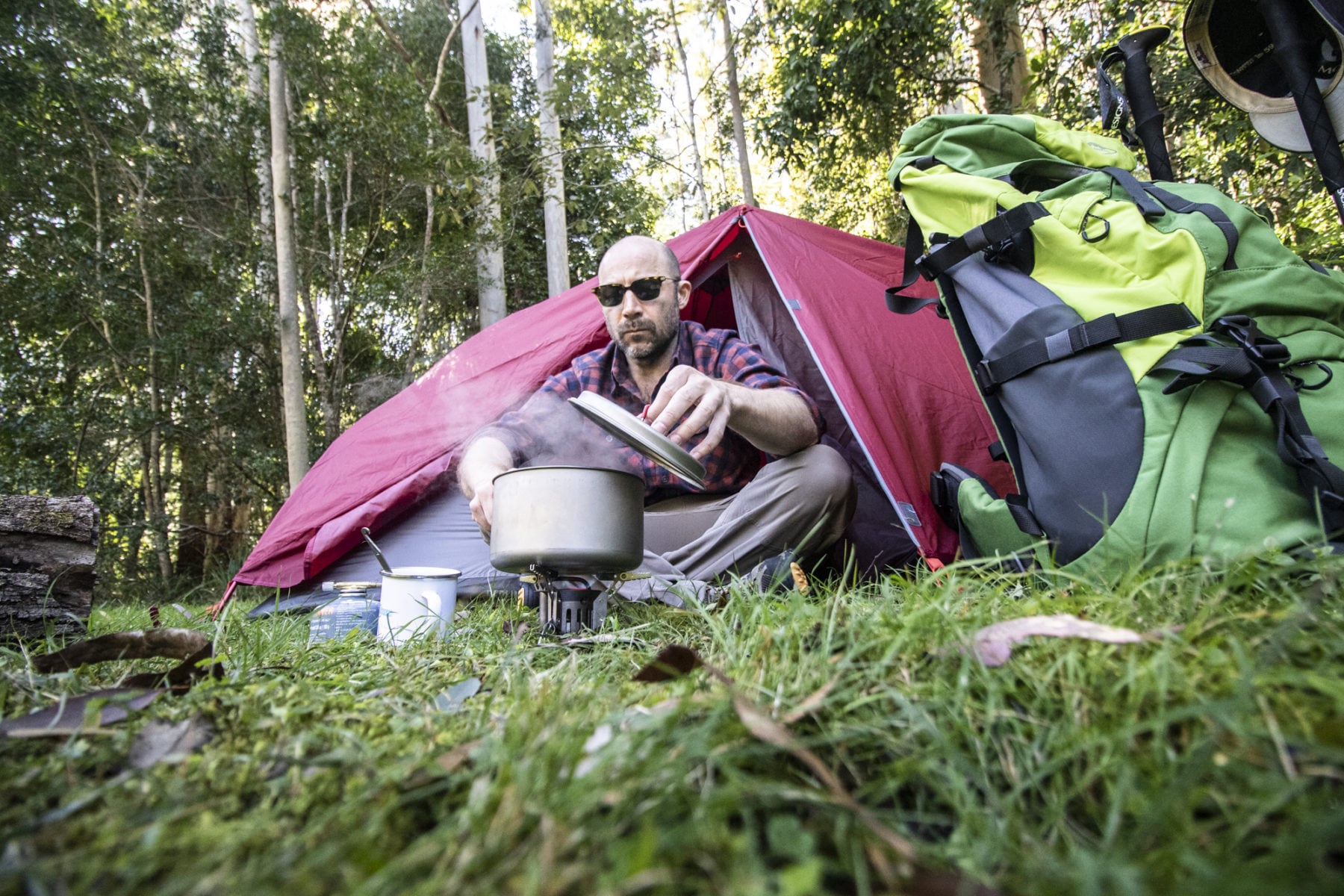
Reliability, light weight, compact size and ease of use is key when it comes to stoves for hiking-, paddling- or biking-based camp cooking. The final choice will come down to what type of meals you wish to cook, the length of time away, and the conditions in which you will be cooking them. A stove’s fuel type governs stove designs and, along with the type of meals you usually cook when outdoors (boil-in-the-bag; meals using fresh ingredients), will influence your stove choice. There are three main types of stoves suited to lightweight adventures: canister (liquid gas) based, liquid fuel based, and natural fuel based. Each of these will have advantages/disadvantages to the other and your choice will also depend on where you intend going.
Most human-powered adventures in Australia take place below the tree-line, which means you will be either cooking simple meals or boiling water, making the gas canister-based stove probably the best option. Canister stoves can include fuel types such as propane, butane and isobutane (or a mix of these) and are generally very quick to bring water to the boil; the Jetboil Flash (one of our favourites; see our review here), is a great example of this stove-type. Plus, this type of camp stove offers good simmer-control, allowing you to produce some impressive culinary results.
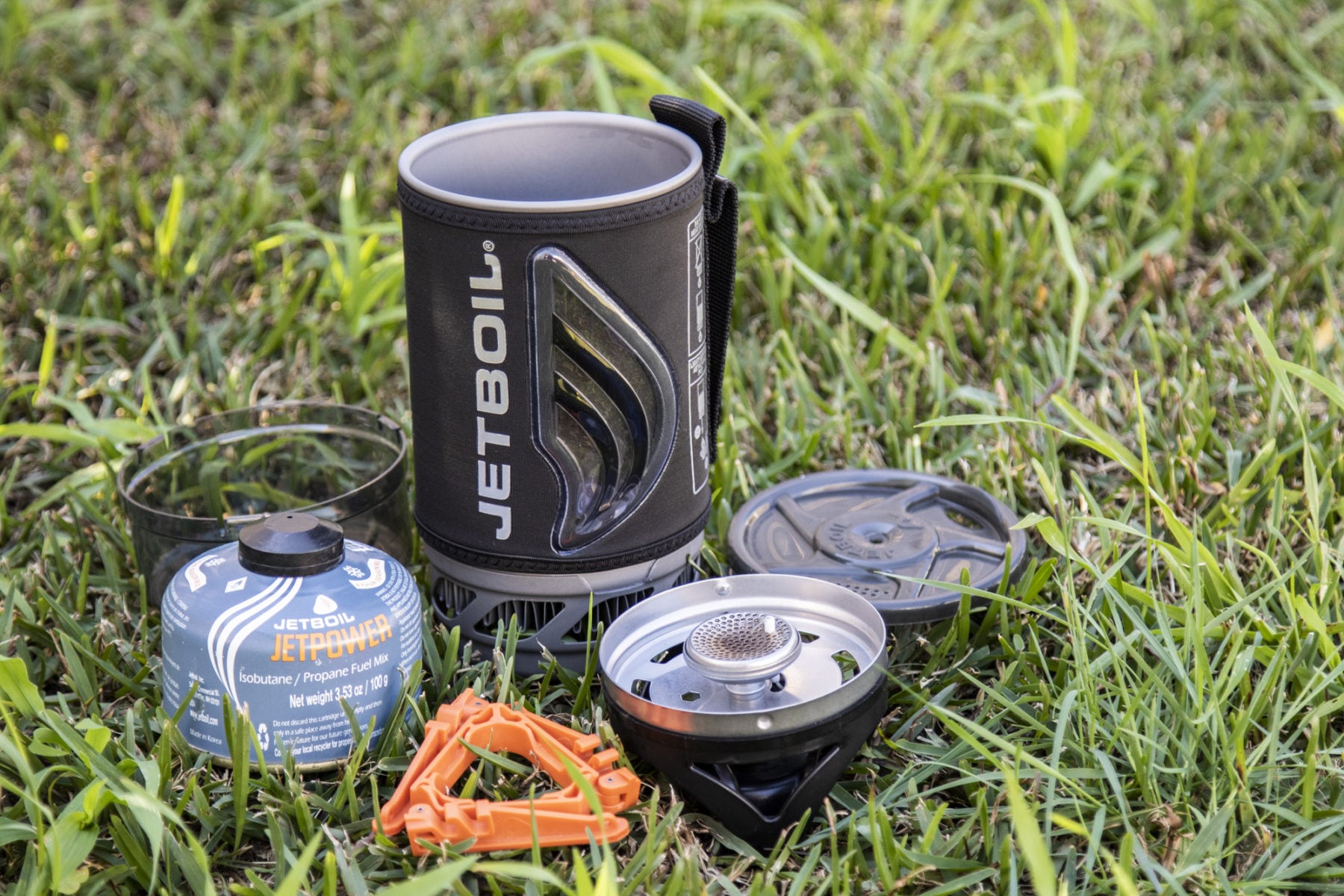
For this camp stove type, the canister generally screws into the burner itself and they are set up, with pot on top, in an upright position (you can also get frypans and coffee presses for these stoves). There are also canisters that connect via a hose to the burner, aiding stability and allowing users to invert the canister for better performance in colder conditions. Plus, with the burner on a small stand, you gain a more stable base if you bring along a pan, for example.
Liquid-fuel stoves are more ‘cold-friendly’ and (depending on the model) can burn different fuel types, too, with Coleman one of many brands that produce a range of these stove types. The liquid-fuel stoves comprise a pump, tank, fuel hose, burner and a valve to control output, with the burner connected to the fuel bottle via the hose, thus the burner provides a more solid base for larger pots and pans. Operation is more complex than the screw-in canister stove, whereby you use the pump to pressurise the fuel inside the fuel bottle, forcing it down the hose to the burner. Fuel used is most commonly Shellite (also known as ‘white gas’), but some units can use kerosene, diesel or petrol, which is super handy in more remote areas where gas canisters (or Shellite) may not be available.
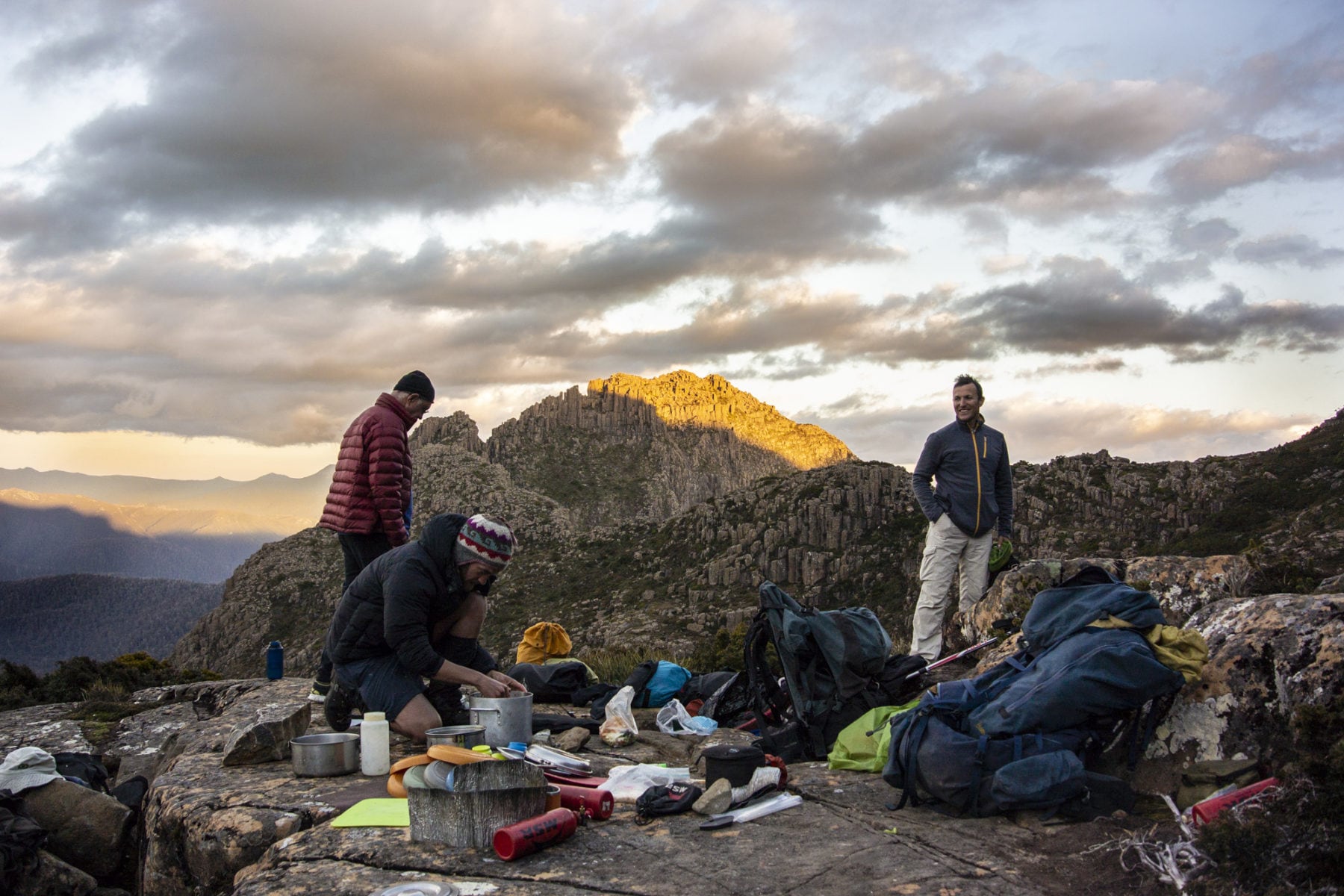
One thing to note with the liquid-fuel stove is that it will take up more space in your pack/bikebag/drybag. For hikers and paddlers, this may not be a big (excuse the pun) issue, but for bikepackers it may be.
Alcohol-fuel stoves are another option, with methylated spirits the most popular of this fuel type (the Trangia stove is an iconic example). These stoves are very basic in operation (you simply light up the small amount of fuel in the ‘bowl’), and this simplicity makes them very reliable. This stove type is also stable, due to its pot/base all-in-one design. You will need to be more patient, though; the alcohol fuel stoves take longer to boil water/cook food than a canister or liquid-fuel stove. Plus, cold weather can stretch that cooking time out even more.
Boxing clever

One of the most popular camp stoves is the single- and double-burner butane variety, sometimes referred to as a lunch-box style cooker. These are relatively cheap, offer a convenient disposable butane cartridge, Piezo ignition and a compact plastic carry case for easy transportation.
We’d highly recommend a butane stove as a reliable option for family camping – especially for those folks who may only go camping a few times a year. As mentioned earlier they are cheap and very easy to use; we’ve had huge culinary success with Aus Geo Adventure’s Dune 4WD Dual Butane Stove. A butane stove’s other positives are the fact that refill canisters are readily available at camping stores and (often) service stations, and even in supermarkets.
These stoves offer excellent simmer/boil control, allowing the camp chef to create any type of meal with a bit of time and patience. Models to look for should ideally have enough space between burners to allow for medium sized pots/pans; there’s nothing worse than a ‘two-burner’ model that, really, can only fit one decent-sized pan/pot on it. Plus, using oversized pans or pots increases the risk of overheating the butane gas cartridge, which is dangerous as the reflected heat from the base of the pan or pot can over-heat the cartridge (these stoves do have safety-release mechanisms to counter this). This is why we highly recommend purchasing a reputable brand stove, with Dune 4WD, Spinifex and Coleman worth a look.
LPG stoves
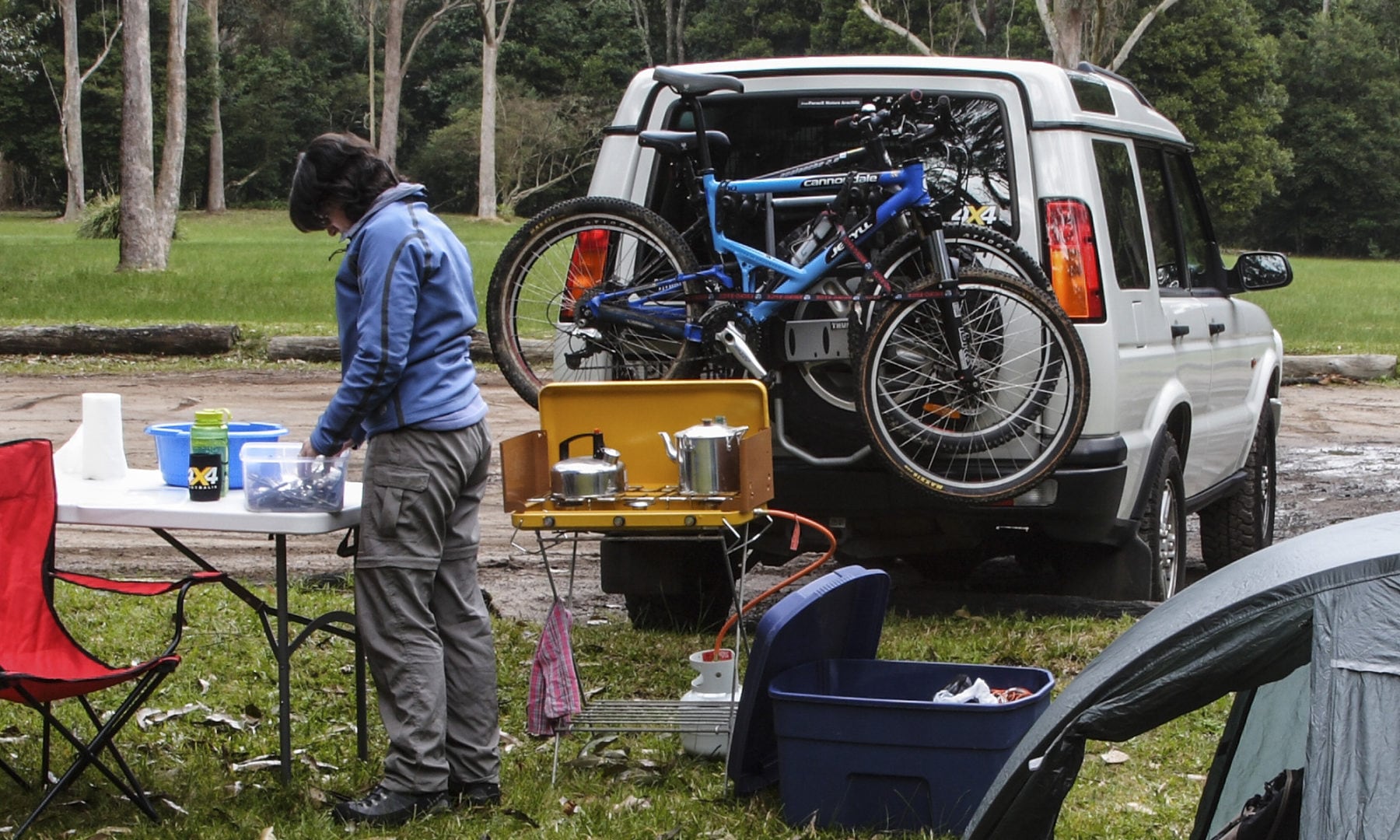
If you have the storage space in your vehicle to carry it (or a roof-rack), a bottle-gas stove is a great camp cooking option, and there’s a huge range of models and sizes available, from single-burner units to four-burner set-ups that would just about rival your home barbecue for cooking performance.
The gas bottles are filled with LPG (Liquified Petroleum Gas), which is a combination of butane and propane, and there are a variety of reason to opt for such a fuel: the bottles are refillable; it’s a cheap fuel; it can be purchased at most service stations around the country; gas bottles range in size from 1kg to 9kg; LPG offers loads of cooking power; it’s a proven and robust set-up.
The gas bottles themselves have a lifespan of 10 years, after which they must be inspected and re-stamped, or replaced altogether. Depending on the stove type, the gas cylinder is either connected directly or via a governor.
The simplest and most portable gas stoves consist solely of a burner (or two) that attaches directly to the top of the gas bottle, and these are usually suited to bottles with a 3/8-inch connector. Other direct-connect designs offer large cooking plates and posts, which raise the cooking surface to a more convenient height.
A popular set-up is the traditional two-burner gas stove, such as the Spinifex 2 Burner Compact Stove. This design has been around for many years; it packs away into a small, self-contained briefcase-size unit and when unfolded it has legs and the lid and side panels act as wind buffers. Many modern units feature Piezo ignition and stainless-steel construction, and the two-burner arrangement is convenient for cooking meals such as pastas, where you can boil the pasta on one side and cook/heat the sauce on the other.
If you opt for a gas bottle set-up, there are a variety of other outdoor accessories that can be powered by the same fuel source, including camp lighting and three-way portable fridge/ freezers. If you have the space, it’s always advisable to carry a spare gas bottle with you – after all, they only ever run out of gas when you’re using them.
Fire up with camp cooking
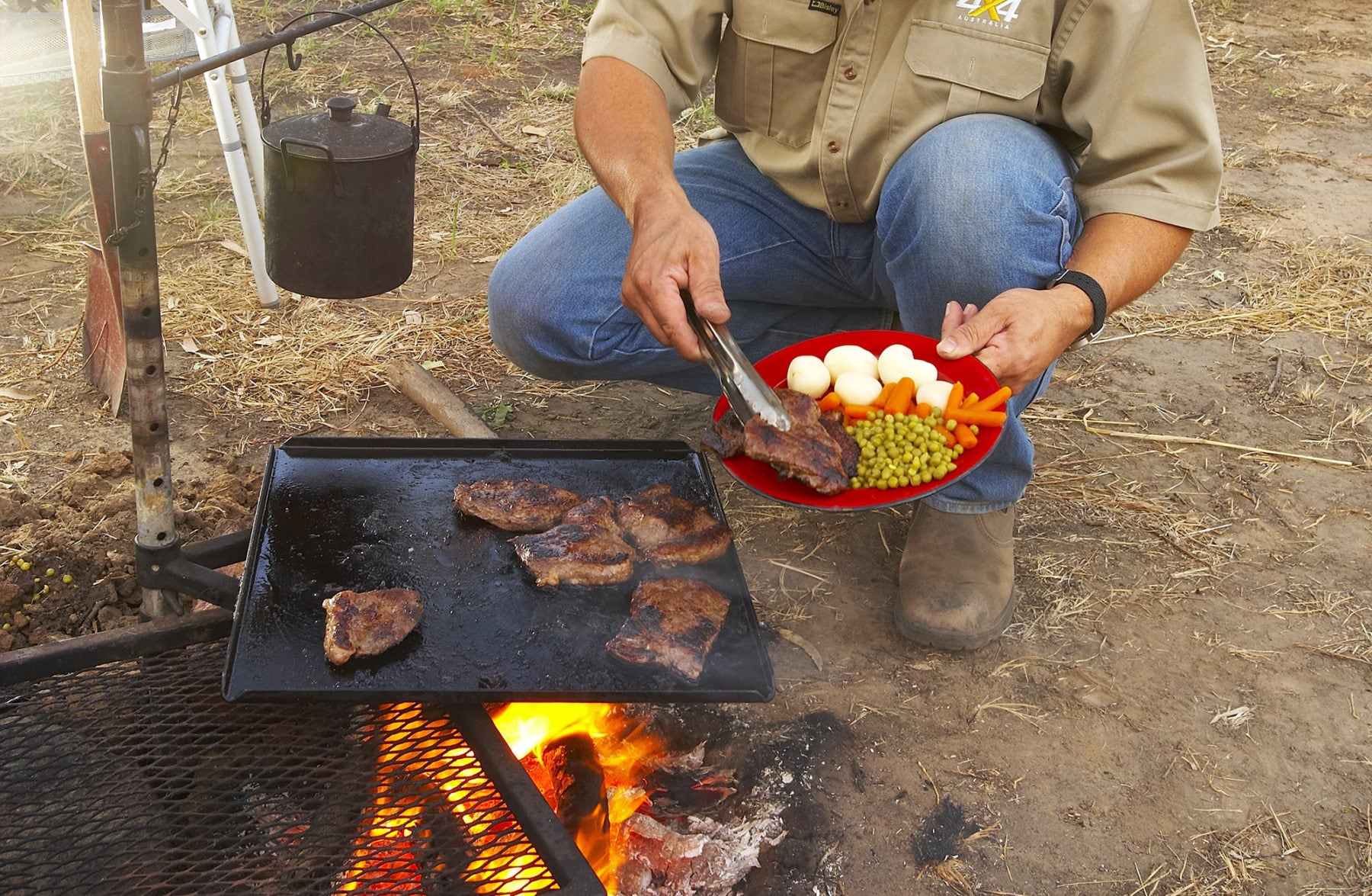
If there’s one thing in your camping life you must do at some point, it is to cook on an open fire. This is not always easy in Australia for the obvious reasons of bushfire risk and the lack of available firewood (please don’t even think to cut down a tree for your fire; green wood doesn’t burn, and it is – obviously – incredibly irresponsible). All that aside, in the proper conditions and season, cooking over an open fire at camp is brilliant.
In terms of what to cook with, a fold-out cast-iron hot plate is brilliant to use and works very effectively in tandem with swing-away pot/kettle holders often found in national park fire rings. You can also purchase a similar setup for when you are in more remote areas, bush camping. As well as these products, a cast-iron camp oven is an absolute must we reckon for fire-based cooking – the end result is always delicious!
The camp kitchen
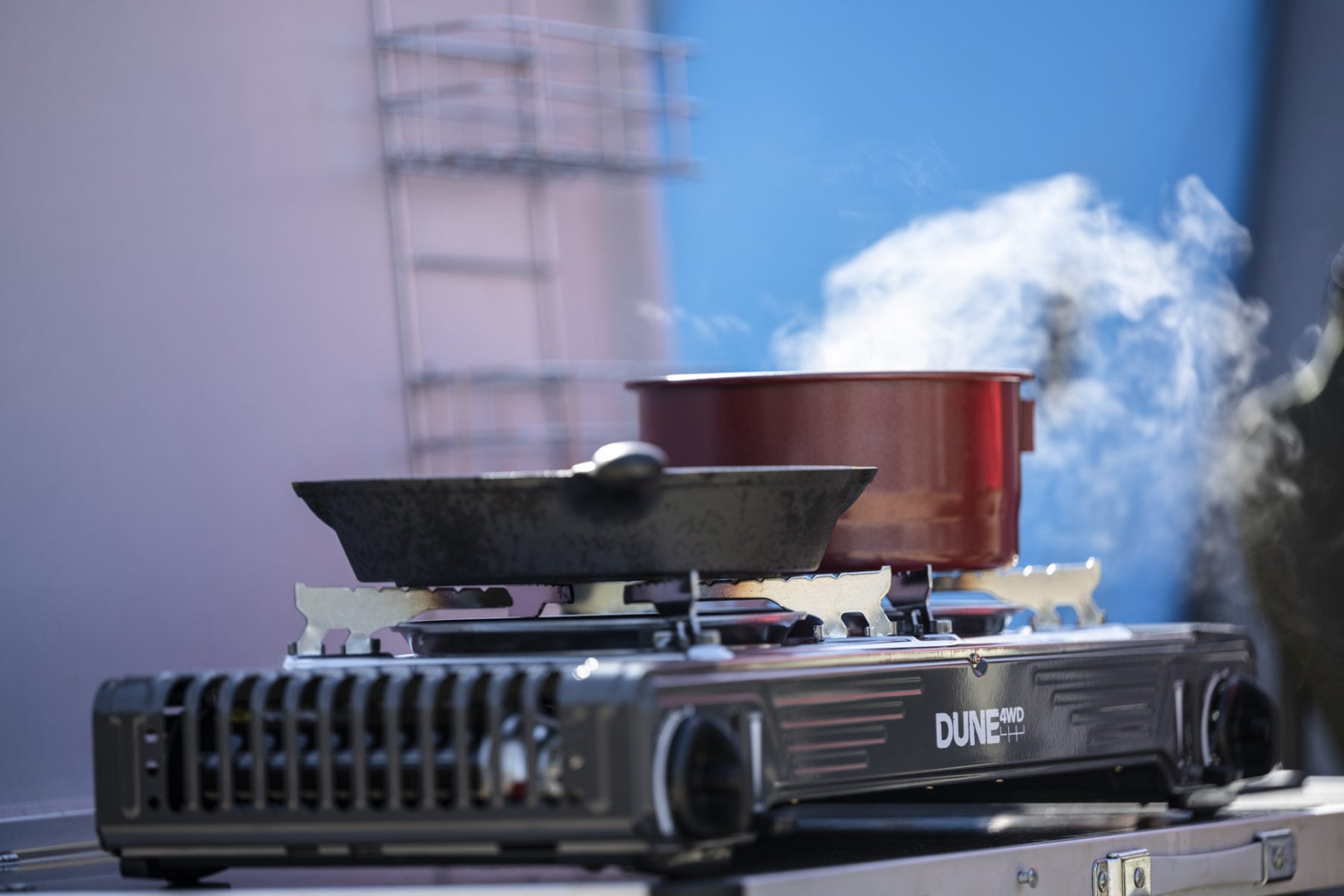
Pots, pans, cups bowls and cutlery – there are myriad options for the outdoor chef, in terms of design and materials used, for the best performance and results to suit your activity of choice. Again, bikepackers will need to source the lightest/most compact plates, bowls, cups, etc., and may need to opt for just a bowl that can do double-duty as a ‘plate’ if need be, for example, while paddlers have the luxury of that aforementioned additional load space.
Stainless steel is the heaviest pot/pan material but a great conductor of heat. Stainless steel is also the most robust, by far, making it ideal for car-based camping. Titanium is the lightest and most expensive, while offering decent heat conduction. The best compromise for weight, performance, ease of cleaning and cost is aluminium, coated with a non-stick material. For bowls, plates, mugs and utensils, such as knives, spatulas, forks, etc., any of the above materials work well but also consider synthetic alternatives – they are tough, durable and lighter than their metal-based equivalents.
For those focused on vehicle-based camp cooking, the cookware you use will be, like almost any item of equipment, governed by storage space to a degree, but more importantly by considerations such as durability, ease of use, packed size, etc. For this writer – and even though it isn’t that light in weight – my go-to cookware is either stainless steel or cast-iron. This is purely due to my preferred camping being fully remote, i.e., away from everyone. This is great in terms of peace and quiet, but it does mean you need gear that doesn’t fail – and that definitely includes cookware (including even to the point of using metal mugs, bowls and plates).
Keeping it fresh for camp cooking
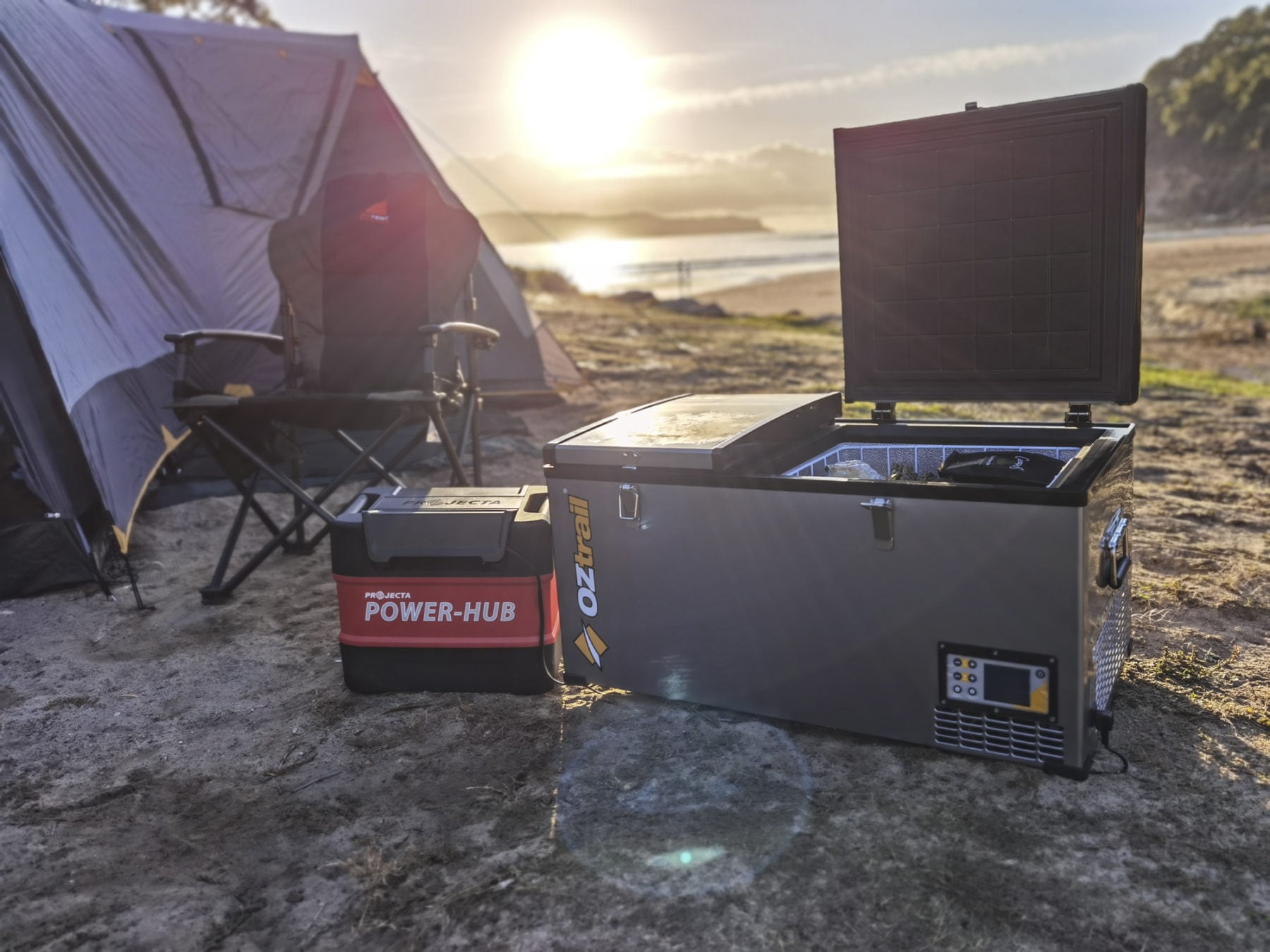
When it comes to fresh food storage for camp cooking, there are two choices: the ubiquitous Esky packed with ice, or – if you have the space – a portable fridge/freezer. The Esky is ideal for those weekend camping trips where there is a kiosk or shop nearby to top up on ice, but for anything longer than that, a portable fridge/freezer is a must. This does, however, mean either buying a portable power-pack, such as the Projecta Power-Hub or, in the case of a 4WD, perhaps fitting a dual-battery system. You can power a fridge from your car’s auxiliary 12V connection but be aware that they draw enough power to flatten your battery in a day or so.
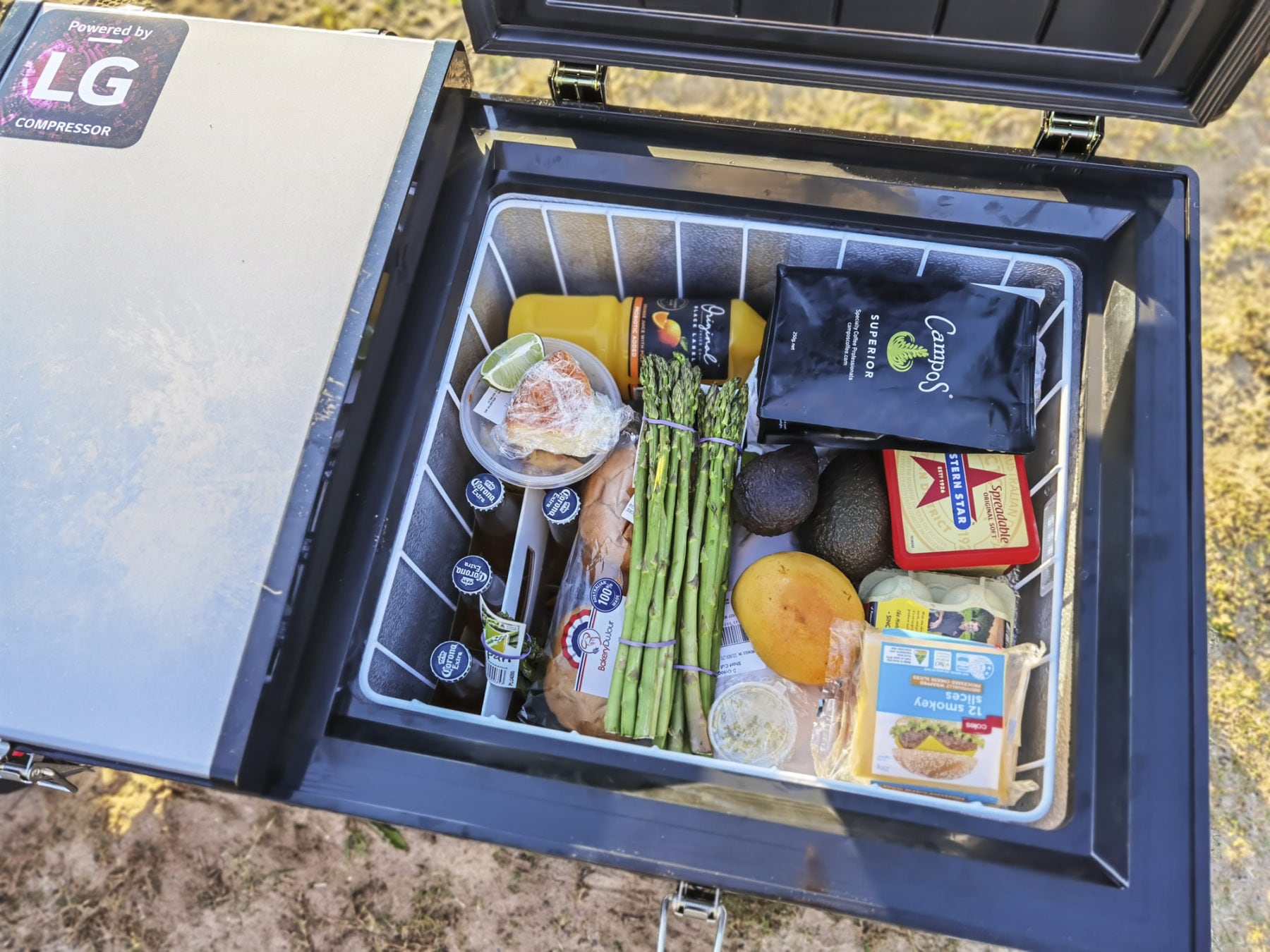
Yes, it sounds like a hassle – and these units can be expensive, depending on the size and features – but, having been on several multi-week outback expeditions, I can tell you they are the only option for any semi-serious car camper. There are a number of brands that offer fridge/freezers in a variety of sizes, from 30L up to around 125L, along with different internal configurations. The Oztrail Dual Zone 80L is one (larger) example: this dual-compartment unit allows you to use one compartment as a fridge, the other as a freezer if need be. Or, you can just run both compartments as a fridge, with food in one and beverages in the other. Happy days!
Camp cooking: The final word
Now you’ve seen the variety of camp cooking equipment there is on the market – and hopefully found which set-up you think suits your type of camping adventures – you get to the fun part: buying the stuff. This is the perfect excuse to wander through your local Anaconda store and ask advice from the experienced staff, while gawking at all the goodies on the shelves, and then heading out and using it in the wilderness. Enjoy!



